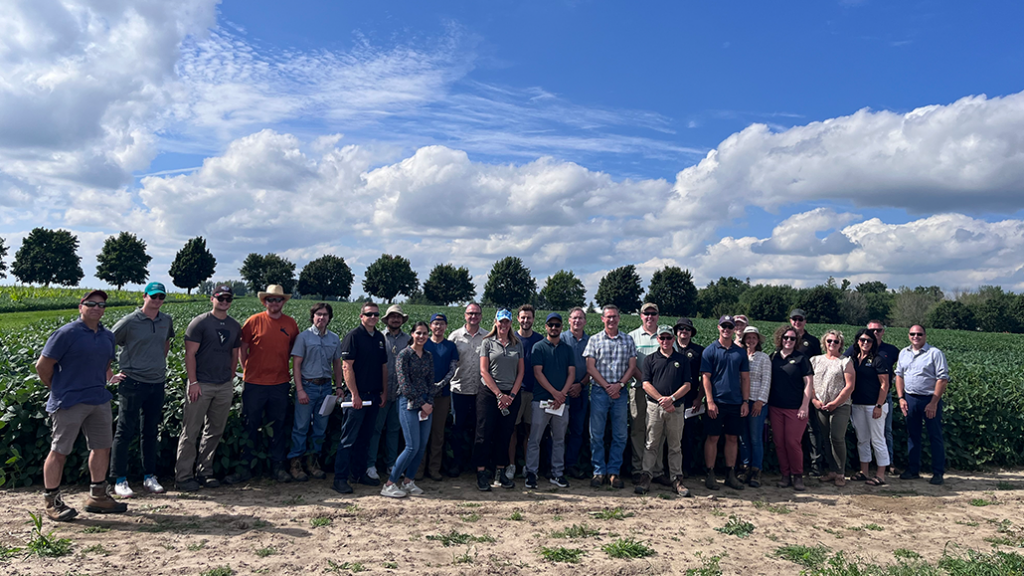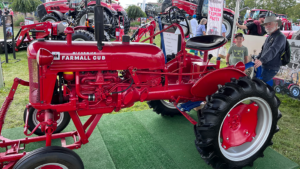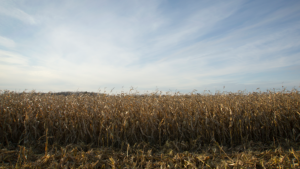Celebrating soybean breeding
ADVANCING INNOVATION WITH TECHNOLOGY

SUCCESS IN SOYBEAN breeding improves yield by approximately one per cent each year, but this rate will have to increase significantly in order to meet projected food demand. To prepare, breeders are reviewing progress and evaluating new technologies that could advance their programs.
Istvan Rajcan, professor and graduate coordinator in the Department of Plant Agriculture, has led the University of Guelph’s soybean breeding efforts for the last 25 years.
Since there are few written reviews about how soybean breeding programs are run, Rajcan and research associate Mohsen Yoosefzadeh-Najafabadi were inspired to publish a paper that describes public breeding efforts in southern Ontario.
“Soybean breeders are mostly dealing with complex traits that are under control by several intrinsic and extrinsic factors, so sufficient information about past and current breeding efforts is required to modify future programs accordingly,” says Rajcan.
HOW IT WORKS
Guelph’s soybean breeding program, which began in the 1970s, is focused on developing high-yielding, high-seed quality, and disease-resistant cultivars within the range of 2400 to 2900 crop heat units (CHU).
An average of 120 crosses are made annually in growth rooms, and F1 seeds from each cross are harvested in April. (F1 hybrid is a term used in genetics and selective breeding. F1 stands for Filial 1, the first filial generation seeds/plants resulting from a cross-mating of distinctly different parental types). The F1 seeds are then planted in growth rooms, and seedlings are transplanted to an irrigated field in Ridgetown. F2 seeds are usually harvested in October and then sent to Costa Rica to produce two generations in a winter nursery, which speeds up the overall process by two years.
Once the F4 seed arrives in Canada in the spring, up to 40,000 plants are grown in a nursery in Woodstock. 4,000 to 6,000 F4 plants are selected and planted the following year as F5 headrows. 500 to 700 plots are then selected and planted as F4:6 preliminary yield trials at one location based on maturity.
150 to 200 lines are selected and grown as F4:7 lines in advanced yield trials with three replications in two locations, after which 50 to 70 F4:8 lines are selected and grown in locations across Ontario, Quebec, and Manitoba over two years.
Breeder seed production begins after the first or second year of Ontario public yield trials and finally results in three to five cultivars being released to the industry per year.
BREEDING SUCCESS
More than 130 varieties have been released by the University of Guelph since 1970, and many have experienced longevity in the market.
OAC Bayfield, which was initially developed by Jack Tanner and Wallace Beversdorf in 1985, thrived for over two decades after it was released by SeCan in 1994. Other important releases like OAC Wallace, OAC Champion, and OAC Kent had OAC Bayfield as a parent, and many of these varieties are still used in breeding programs today.
While breeding objectives have varied over time, the productivity of the University of Guelph program stands out to Rajcan. Many of the released cultivars have had wide reach and adaptation and are grown in Ontario, Quebec, and Manitoba, as well as countries like Germany, Austria, Ukraine, and Russia.
Research collaboration with Chinese breeders has improved genetic diversity, a key component of any breeding program. Rajcan was able to bring seeds from 50 cultivars from northeast China to Ontario and is excited to make crosses with them and continue the project.
He emphasizes that Guelph’s program also yields new plant breeders, which is important for the future of the industry.
“I’ve been able to train and graduate 44 graduate students in my time here, and currently have five graduate students in courses,” Rajcan says, noting that all of the graduates are employed and many work in seed industry leadership positions.
TECHNOLOGY IS KEY
Numerous technological advances have accelerated soybean breeding and Rajcan is excited about further implementation of new technologies.
“We want to make sure that every generation is more accurate in terms of the traits we are trying to select for, and we don’t want to waste time and resources on materials that don’t hold promise,” he explains. “In the past, just visually looking at the plants was very difficult, but now we are studying genetics by collecting large amounts of data to make selections that are more precise.”
Significant advancements have been achieved by using genomic markers to select for traits such as oil, protein, and other seed compositions. A current project in Ontario and Quebec is focused on adapting genomic selection for major Canadian soybean breeding programs and it is expected that breeders will incorporate this technology into their selection strategy in late 2024.
Rajcan is hoping to advance phenotyping using drones in the near future. Remote sensing approaches can be used to predict and map yield, maturity, biomass, and other soybean traits.
However, breeding for complex traits is complicated and time-consuming as it requires extensive phenotypic, genetic, and environmental information. Although there have been many recent advances, more efforts are needed to increase the speed of the breeding process.
The more high-throughput “-omics” approaches are used, the more data is collected. Analyzing big data sets requires intensive computation and the use of modern statistical approaches such as different types of algorithms. Machine learning algorithms for analyzing complex nonlinear and multivariable systems are actively being studied in plant science.
Climate change is also top of mind for soybean breeders. Changes in temperature may require Ontario breeders to select genotypes with different maturity ranges as well as modify breeding strategies due to reduced genetic diversity if some genotypes cannot survive in future climate conditions.
Yoosefzadeh-Najafabadi and Rajcan’s paper “Six decades of soybean breeding in Ontario, Canada: a tradition of innovation” was published in the Canadian Journal of Plant Science and has received the 2023 editor’s choice award. •










